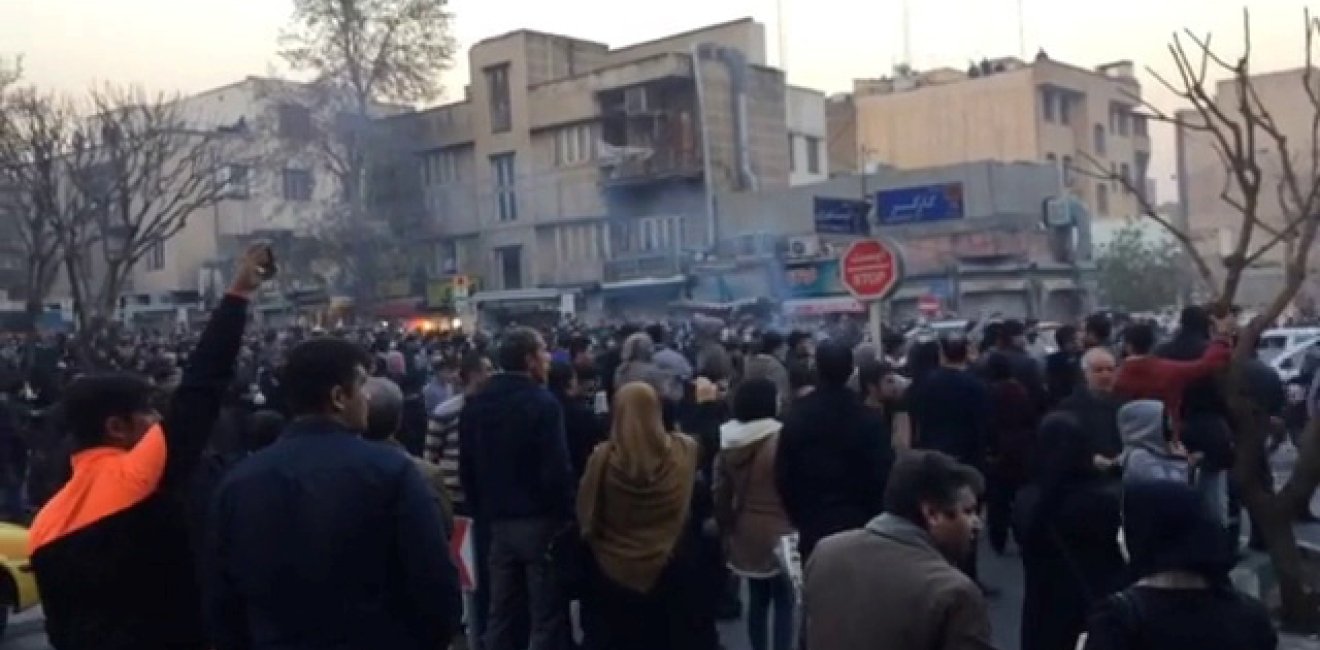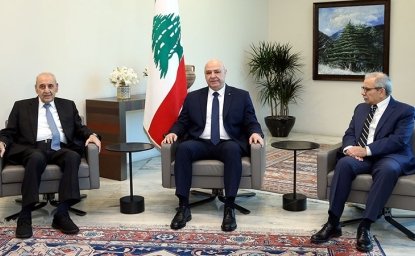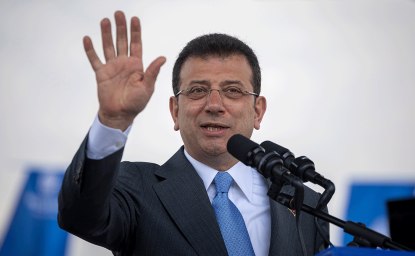After a week of political unrest in Iran, it is now possible to delineate the prominent features of the protests and demonstrations.
The unrest broke out in the northeastern city of Mashad over economic grievances, and economic issues remained a prominent feature of the protests as they spread to other towns and cities around the country. Understandably so. Although President Hassan Rouhani has succeeded in moderating inflation and the economy is slowly growing, prices remain high, especially for essential staples, and many families are finding it very difficult to make ends meet. Family breadwinners often hold down two and three jobs.
Unemployment and underemployment remain high, especially among the young. The gap between the rich and the poor has widened. The budget Rouhani recently presented to parliament proposes to cut subsidies for the poor even as it allocates generous funds to Islamic propaganda organizations.
Iranians expected — and were promised — prosperity and easier traffic with the West once sanctions were lifted as a result of the nuclear agreement Iran signed with the world powers in 2015. These hopes were dashed. Prosperity hasn’t come, and relations with the United States under President Trump have grown even more strained than in the past.
A second striking feature of the protests is the speed with which political grievances were added to economic ones. The protests seem to reflect a general weariness among many Iranians with conditions in the country. Protesters shouted slogans such as “Death to Rouhani,” the president who promised to open up society, bring better economic conditions, and improve relations with the international community; and “Death to the dictator,” a clear reference to Supreme Leader Ayatollah Khamenei.
Protesters called on Khamenei to step down. They shouted, “We don’t want clerical government!” Also, surprisingly, they called for an end to Iranian engagements in Lebanon, Syria and the Gaza strip, and for the money spent abroad to be devoted to improving conditions at home. Such slogans touched on the very pillars of Iran’s policies.
The geographic pattern of the protests is also striking. True, the demonstrations first broke out in a major city, Mashad, and there has also been unrest in the capital, Tehran. But the centers of unrest principally have been smaller towns all across the country. Unlike the massive election protests of 2009, which were centered on Tehran and other major urban centers — and which drew in large communities of the middle class — these protests seem to be the work of the young, the unemployed and people who are marginalized in society.
The government’s response is noteworthy. Rouhani, in his first remarks on the unrest, acknowledged the people’s right to protest and recognized that they have grounds for economic complaints. The government appears to have decided, as a matter of policy, to allow the people to vent their economic discontent, but to draw the line on anything else.
Even the right-wing newspaper, Kayhan, close to the Intelligence Ministry, in its early commentaries acknowledged that people have grounds for economic complaints but drew the line at violence. However, the political turn that the protests took — and their rapid spread — has raised alarms. Khamenei on Tuesday blamed the unrest on foreign money and instigations and foreign intelligence services.
Some analysts have described the early response of the regime and its security forces as restrained. It remains a fact, nevertheless, that more than 20 people have been killed and many hundreds arrested.
What happens next? Much depends, of course, on whether the protests grow and are sustained, and whether the security forces feel they must step in to crush them. The commander of the Revolutionary Guards has warned that the Guards will employ the “iron fist” if necessary.
However, even if the protests are crushed or simply dwindle away, they constitute a wake-up call to the regime. The regime clearly needs to address the desire of large elements of the population for relief from hard economic conditions, greater freedom, respect for human rights and easier relations with the outside world. People also wish to see an end to widespread official corruption and to domination of power by a narrow elite.
Past experience is not promising. The holders of power and privilege in Iran are not willing to share it. The Revolutionary Guards have become dominant players in the economy, domestic security issues and foreign policy. The regime is bent on extending its influence in the region , regardless of the financial cost or damage to Iran’s relations with its neighbors and the West. The security services and the judiciary work together to suppress dissent and political activities, and are not accountable to the elected government.
Rouhani has had little or no success in overcoming these serious obstacles to meaningful political, economic and social reforms. He may succeed in persuading Khamenei to allow some easing up of political controls. He may take steps himself to ease social controls. He may even find ways to ameliorate economic conditions for the poor and the working class.
These will be only marginal changes. Despite the protests, it is hard to see that anything fundamental will change.
The opinions expressed here are solely those of the author.
This article was originally published on The Hill.






